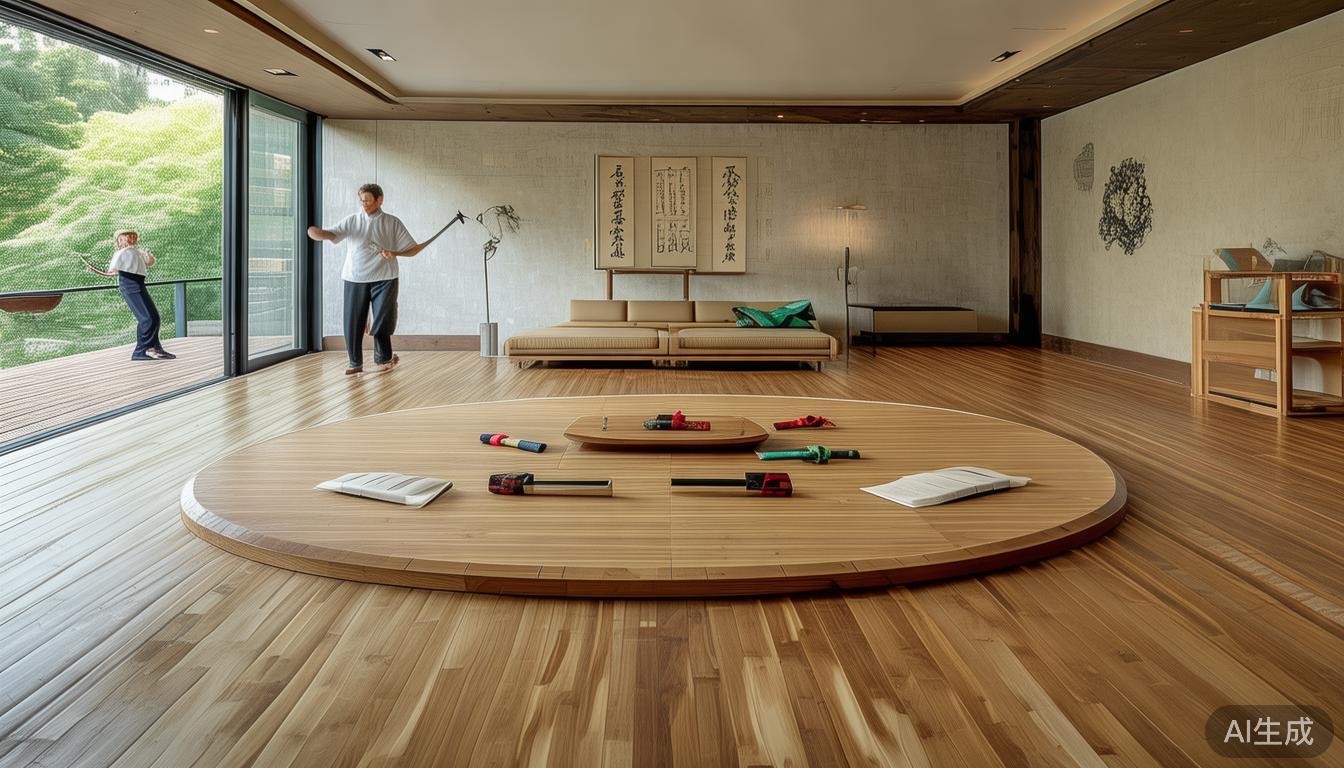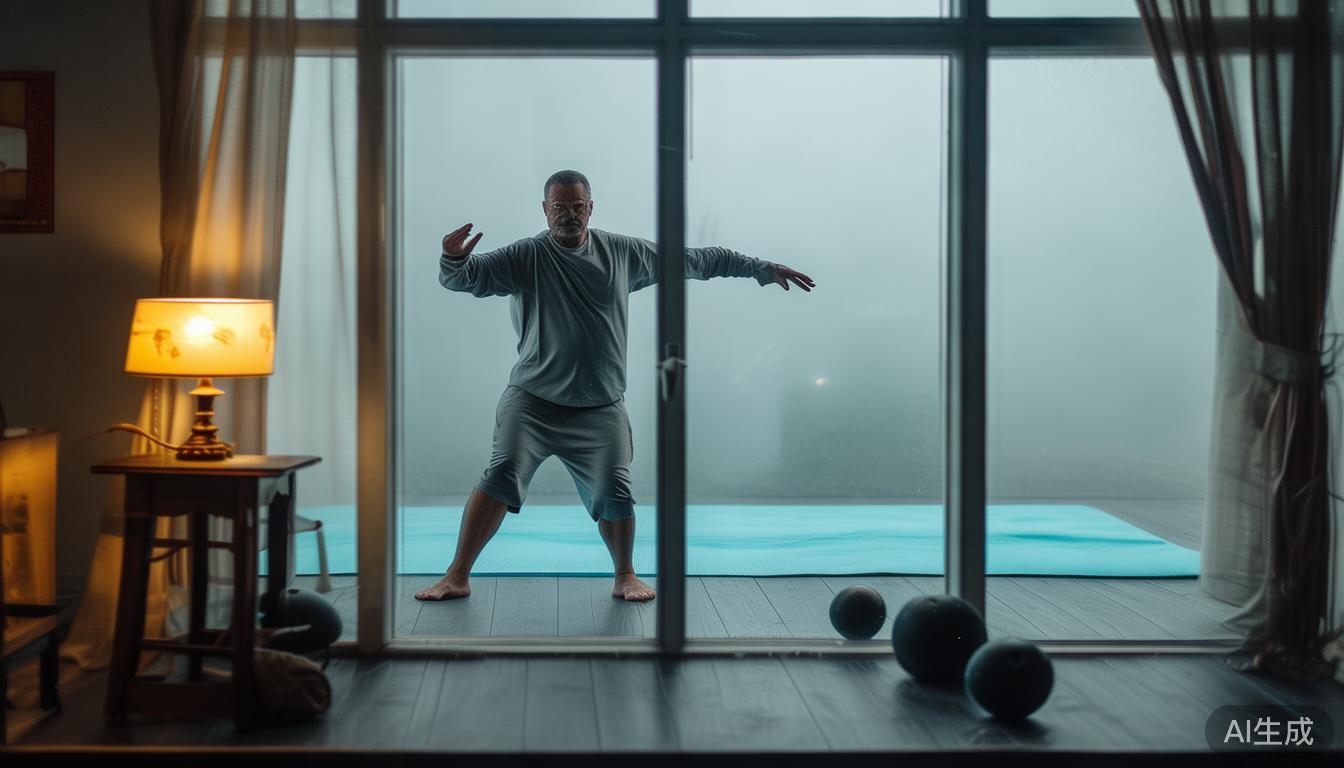Over the years, I have been accompanying Tai Chi, and I have deeply realized that this ancient sport not only brings flexibility to the body, but also peace of mind. It does not pursue instant bursts like strenuous exercise, but awakens the inner energy in a slow flow, allowing each practitioner to find his or her own rhythm. Whether it is a group practice in the park in the early morning or a moment of immersion when alone at home, Tai Chi can always be integrated into life in the most gentle way, becoming a good medicine against the fast pace of modern times.
How Tai Chi Improves Body Balance
As age increases, the body's balance ability will naturally decrease, and Tai Chi's unique footwork is a natural solution to this problem. Through continuous practice, I have seen many older people walk with their hands on the wall, and now they can stand firmly on one leg. Tai Chi movements stipulate that the center of gravity must slowly change position between the legs. In fact, this seemingly inconspicuous movement actually trains the cooperation and coordination between the calf muscle groups and the nervous system. A seventy-year-old student once shared something that made her feel extremely reassured that she would not have any worries. When the road was slippery on a rainy day, even if she slipped a little, her body had adapted to the corresponding state changes in a very short period of time, and she was no longer afraid of slipping or other critical situations.
Tai Chi is an amazing exercise for your core muscles, and it has nothing to do with preventing falls. Every turn and move must be supported by waist and abdominal strength. This kind of core training is low-intensity and continuous, and it won't put any burden on the joints. I suggest that beginners start with the basic movement of cloud hands to feel the subtle touch of airflow around the waist. After three months of persistence, you will find that it becomes easier to go up and down stairs, and the pain in your waist caused by sitting for a long time is also significantly reduced.

How to choose the right Tai Chi style
Faced with different schools such as Chen Style, Yang Style, Sun Style, etc., people who are just beginning to learn often feel confused. In fact, the core philosophies of each school are the same. The main difference lies in the rhythm of the movements and the gradient of difficulty. The movements of Yang Style Tai Chi are as smooth as flowing clouds and flowing water, which is particularly suitable for age groups. For older people and people who are recovering, Chen style retains more powerful movements, which is more challenging for young people who want to improve their cardiopulmonary function. When teaching, I always recommend new students to watch different styles of drill videos first, and pay attention to the coherence of movements and the coordination of breathing . Chi Courses Online ,
When choosing, you also need to consider the professional background of the teacher. An excellent Tai Chi instructor is not only very proficient in the moves, but can also clearly explain the offensive and defensive meaning and health-preserving principles of each movement. You may wish to experience a few trial classes to feel whether the teacher pays attention to the individual differences of students. Remember to avoid those courses that only emphasize the beauty of the appearance but ignore the inner breath. The real Tai Chi practice should make people feel comfortable after the practice, not muscle soreness.
What are the common misunderstandings among Tai Chi beginners?

Many people mistakenly regard Tai Chi as a simple gymnastics for the elderly. In fact, precise practice requires three-dimensional coordination of consciousness, breathing and movements. The most common problem encountered is excessive range of motion and neglecting the inner breath to guide the best tai chi . I once corrected a student's wild horse mane parting movement. His original low posture caused knee pain. After adjusting to the appropriate height, he felt the warmth of blood circulation. Keeping in mind the key of "continuous form, judgment and intention" is more critical than assuming a standard posture.
Another common misconception is to rush to learn complicated routines. Practitioners who can really benefit from it often start with stances and single repetitions to hone the basics. This is just like calligraphy practice starting with the eight steps of Yongzi, spending 15 minutes a day on it. Practicing the spiral force of holding the sparrow's tail is much more valuable than completing the entire set of movements without analysis. The suggestion is to equip yourself with a floor-to-ceiling mirror for self-observation, and pay attention to keeping the tail in the center to prevent bad habits such as leaning back and leaning forward that will affect the effectiveness of the practice.
In the midst of busy days, are you able to find ways to achieve peace and tranquility while your body and mind settle down? You are welcome to share your experiences in the comments area about your efforts to relieve stress. If this article has inspired you, please feel free to give it a thumbs up to support it.



Leave a Reply